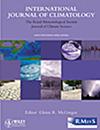Construction of Temperature-Vegetation-Precipitation Dryness Index (TVPDI) and Dry–Wet Condition Monitoring Across China
Abstract
Soil moisture (SM) is a direct representation of the dry–wet condition, and it is an important indicator to characterise agricultural drought conditions. However, achieving large-scale, long-term and continuous monitoring of SM remains a significant challenge, particularly when considering both spatial and temporal resolution. The Temperature-Vegetation-Precipitation Dryness Index (TVPDI) can be used to reflect dry and wet conditions through integrating the intrinsic properties of the precipitation, land surface temperature and vegetation for quantifying changes in earth's surface moisture for solving the problem. The TVPDI was calculated based on the Euclidean Distance Method (EDM) and a three-dimensional model including Temperature-Vegetation-Precipitation, which combines the advantages of the single factors. Besides, the accuracy and sensitivity of the TVPDI were also verified. The results showed that TVPDI proved that the most vital downscaling precipitation data is accurate and reliable according to the observed result. It was highly associated with the most accredited data named combined SM product of European Space Agency Climate Change Initiative (ESA CCI) in China. TVPDI can also monitor short-term meteorological and agricultural droughts, and indirectly reflect the impact of drought on crop losses. It was used to monitor the dry–wet condition of the whole mainland of China and was found that the eastern monsoon region showed different patterns of humidification, while the northwestern Qinghai-Tibet Plateau and the arid and semi-arid regions of northwest China have concussive or continuous drying patterns.


 求助内容:
求助内容: 应助结果提醒方式:
应助结果提醒方式:


